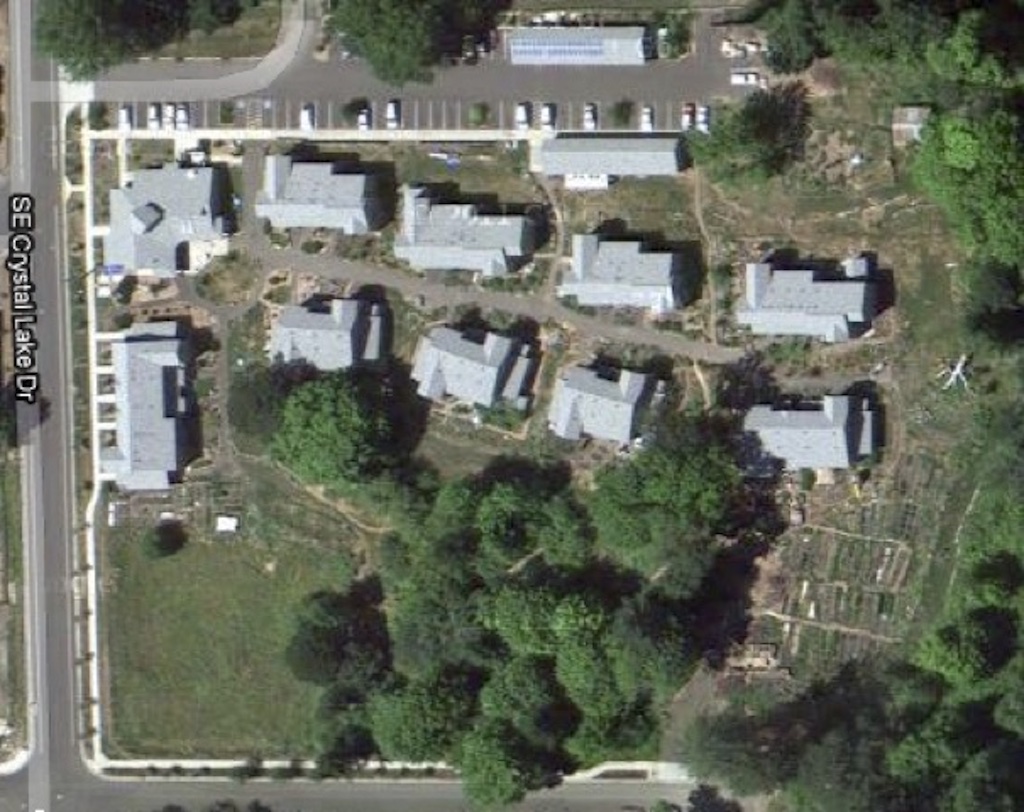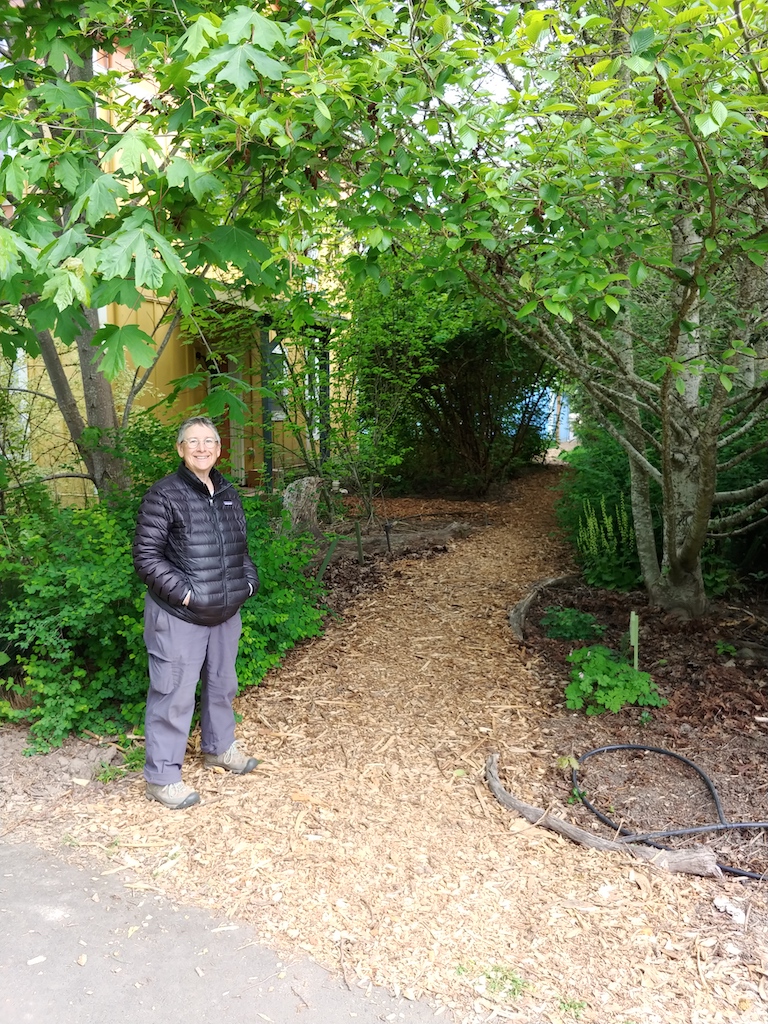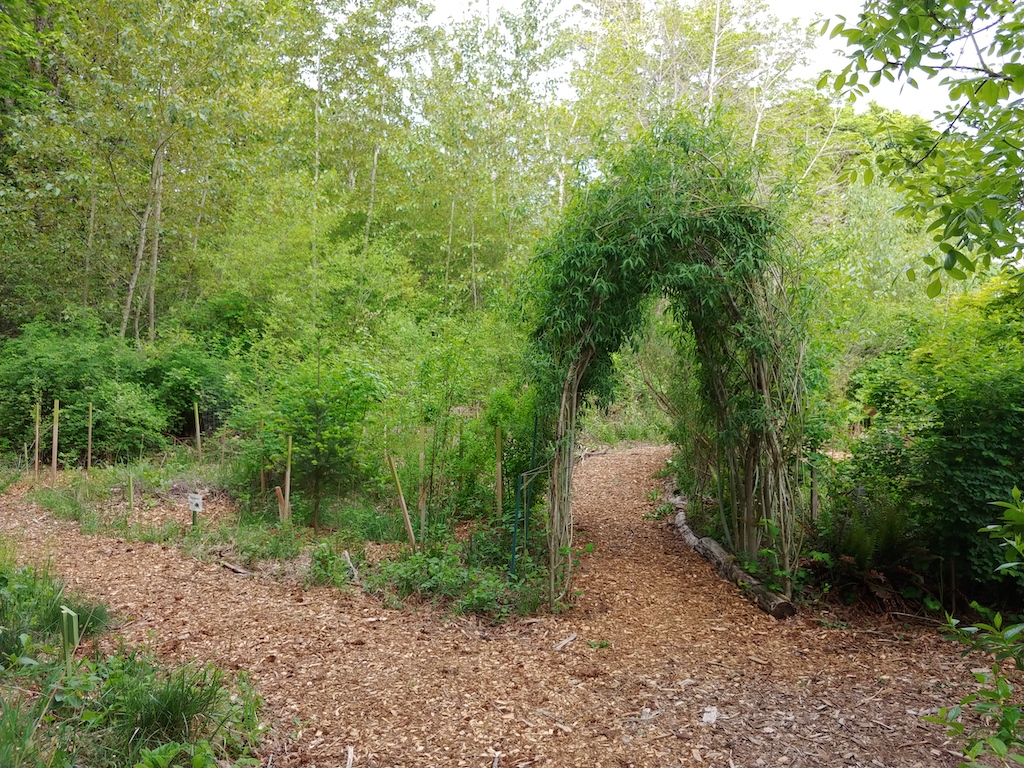When we first moved to Coho, I just couldn’t get the whole “wildlife corridor” concept, especially when I saw deer walking down the main path at Coho. When I asked about the wildlife corridor, one of the stories I heard involved newts being able to cross the fire lane from the swale behind bldgs 6 & 7, and travel between the two berms behind the compost bins to get to Crystal Lake. It sounded like someone was pulling my leg, and I have never seen a newt crossing at Coho.
Wildlife are everywhere and do not distinguish between wildlife corridors and human corridors. Until the orchard was fenced in, we yelled at many an unresponsive deer feasting on our young apple trees, and chased deer out of the veggie garden. I once had a 5:15AM confrontation with a deer who was feasting on a neighbors blueberries. I did not feel comfortable yelling at that time of day when others are sleeping, so I jumped up and down waving my arms. The animal just gave me ‘the look.’ I aggressively moved towards it, Bambi’s thug brother moved a few feet away and stared insolently from behind a snowberry bush. I ran at it, and it casually walked behind a different snowberry bush and stood staring at the crazy biped. It eventually got bored and walked over to a neighbor’s front porch and stared into the front door glass. So, yes, deer, raccoons, possums, nutria, and birds have the run of Coho—why do they need their own “corridor?”


Fledglings. Years ago when the fences were built behind behind buildings 1 and 2, tree trunks that had been harvested from the land for building Coho were used for some of the fence posts. Eventually, once trees and shrubs grew up around the fence, birds began to discover those posts were great places to bore holes and build nests. (Once again, not exactly the “wildlife corridor.”) After watching chickadees and wrens fledge from nests behind building 2 over the years, I noticed a pattern. Chicks leave the nest, then hide in the bushes near the nest for the first several hours or a day. They then migrate to the small wildlife area behind Mike’s unit, and from there to the wildlife corridor to the east. Fledglings need a lot of cover when they are learning to fly and avoid predators. The wildlife corridor provides lots of shrubs and trees to hide awkward fliers.

.
Also, ground-nesting birds. See this blog.
Another interesting feature of the wildlife corridor: the bird population is completely different along the wildlife corridor than it is on the main path. The main path supports a large population of house sparrows. House sparrows are an imported species that aggressively competes with native birds for nesting spaces. They breed multiple times a year, producing many babies, far outpacing the native bird species. House sparrows raid other birds nests, kill babies and parents, then build their own nests on top of the bodies. House sparrows have contributed greatly to the decline of bluebirds all over the U.S. and bluebird conservation groups credit aggressive control of house sparrows with a resurgence of bluebirds where they are successfully breeding.

The main path also supports lots of tree swallows, barn swallows, and starlings. When folks fill bird feeders with millet and corn mixes, the feeders attract house sparrows and starlings (swallows eat insects). Feeding thistle for finches, and black oil sunflower seeds for finches (including grosbeaks), chickadees, nuthatches, jays, and doves, insures that you will get a nice mix of birds at your feeders. A variety of birds, including woodpeckers, nuthatches, and jays eat suet. House sparrows do not like to work for their food, so they are less attracted to specialty foods like thistle and sunflower seeds in the shell. They like the cheap stuff – birdie junk food.
So who lives in the wildlife corridor and visits nearby feeders? This is something I posted on facebook on November 17, 2020 about the birds I saw that morning looking out the window where my feeders connect with the wildlife corridor: “Birds seen at the feeders this morning (if I can remember them all): many chickadees and dark-eyed juncos, many pine siskins and towhees, downy woodpeckers and a hairy woodpecker, white throated sparrows, fox sparrows, song sparrows, a kinglet (probably ruby crowned, but the crown was not visible), a Bewick’s wren, a brown creeper (on the tree), white breasted nuthatches and red breasted nuthatches, a great northern flicker, two Stellar’s jays, Anna’s hummingbird (it just hangs around and occasionally checks out what the other birds are up to), a golden crowned sparrow, a pair of house finches, lesser goldfinches, a white crowned sparrow, starlings. The usual characters who have not shown up when I was watching today: American goldfinch, scrub jays, and bush tits. Where are the bush tits today?… So much wonder and joy found in looking out the window.” Looking for more joy and wonder? Plant more native trees and shrubs near your windows. Offer bird treats that attract our native birds and be AMAZED at the variety you will find!
I enjoyed reading this Betty! Thanks for sharing all of this very interesting info. 🙂
Opps, I mean thank you Leela!
Wow! Makes perfect sense. What a wonderful variety of birds how exciting!! Id love to come meet you all and explore becoming a member! Im an avid conservationist and this sounds beautiful. Are you all currently closed? Covid?